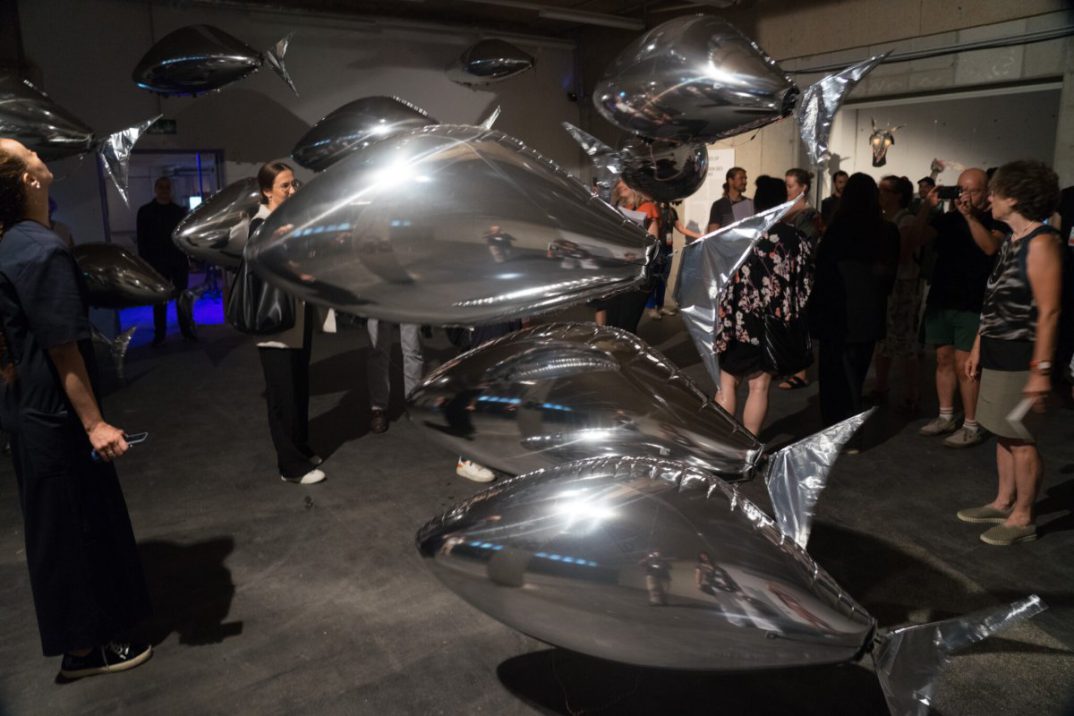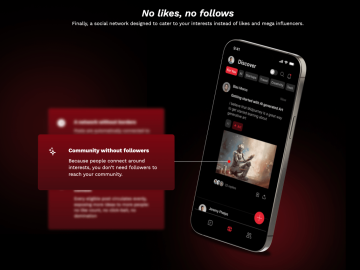This article was originally published in
German
and has been automatically translated.
Anyone visiting the festival for art, technology and society – Ars Electronica – for the first time will be impressed by the wealth of exhibitions, conferences, workshops and performances and overwhelmed by individual works. Long-time visitors will also discover outstanding art, but they will also see the transformation of the spectacle and the forces that bring about these changes.
Anzeige
Was fehlt: In der rapiden Technikwelt häufig die Zeit, die vielen News und Hintergründe neu zu sortieren. Am Wochenende wollen wir sie uns nehmen, die Seitenwege abseits des Aktuellen verfolgen, andere Blickwinkel probieren und Zwischentöne hörbar machen.
The motto of this year’s festival, which took place in Linz from September 4 to 8, was “Hope. Who will turn the tide”. The program text is at pains to dispel the impression of hopelessness. People are convinced that there will be no technical innovation that can solve society’s major problems, nor do they see how the tide could be turned. But they want to show who will do it in the end. It is the many initiatives from all over the world that are making change a reality that can give us courage.
Disagreement about the “problems”
And yet: anyone looking for hope has probably lost it somehow and the question arises as to what has changed for the scene, which has always been critical of social developments but is essentially progressive. One can only speculate. There is only very general talk of “problems” without naming them, as if there is agreement on what the problems are, as if there is no social division with two irreconcilable views of our time.
But the motto of the event should not be overestimated. The times when the ARS set critical impulses in the discourse space of media and computer art are long gone. With 112,000 visitors, 1,260 artists, scientists and activists and 500 events, the festival has reached a size that brings with it its own constraints and opportunities. Gerfried Stocker, artistic director of the festival for many years, is enthusiastic about how more and more initiatives are joining the ARS and how the festival is also becoming anchored in more and more areas of society. He sees the ARS as a platform that offers the global scene a center and a home every year. And indeed, the damage would be great if the festival were to cease to exist for any reason. In the course of this change, the festival motto is not a content-related guideline for the artists, but rather the condensate that the curators draw from the submissions. The danger inherent in such a development is the formation of a bubble, but the growing influx of new ideas should counteract this.
EU Commission exerts influence
One force that is exerting increasing influence on the ARS is the EU Commission. Its ties to the European institutions are becoming increasingly close, as Veronika Liebl explains. She has accompanied the process from the very beginning and has managed the festival since Martin Honzik decided to promote media art in Dubai. Liebl is also a member of the Executive Board, which underlines the importance of the EU connection.
The starting point was feedback from EU projects. Many evaluations showed that out-of-the-box thinking was important in order to expand the scope of solutions for tasks. The ARS was one of four organizations that developed proposals to remedy this situation. One of the results was the “S+T+ARTS Prize”, which is awarded by the ARS. Even if it comes as little surprise, it is not a matter of course that it is the people of Linz who are responsible for awarding the prize. The ARS certainly has undisputed expertise in handling tenders and awarding prizes in the field of media art, and it is only logical that when new prizes are awarded, authorities such as the Austrian Foreign Ministry assign this task to Linz. But the EU reissues the contracts every four years, and to ensure that the prize remains with the festival, Liebl is trying to anchor the ARS more deeply in the supranational organization. During the tour, she proudly talks about the 100 initiatives that have been brought together in 18 EU projects, from which this year’s award winners were selected.
The award winners
There are three “S+T+ARTS Prizes” this year. “Calculating Empires: A Genealogy of Power and Technology, 1500-2025” is an impressive 3 x 24 meter wallpaper that dominates the entrance to the exhibition at Postcity, the festival’s headquarters. Packed with small fonts, graphics and symbols, the black wall with white lettering looks like the construction plan for a spaceship. It takes a moment to step up close and expose yourself to the overflowing wealth of information that Kate Crawford (AU), renowned researcher and critic in the field of AI, has compiled together with Vladan Joler (RS).
“Calculating Empires: A Genealogy of Power and Technology, 1500-2025”
(Image: Dorothea Cremer-Schacht)
What is shown is the development of technology and power structures broken down into eleven time periods and 33 chapters with many substructures. The chapter on “Communication Devices”, for example, shows a thread that leads from the printing press to phototypesetting, desktop publishing, e-books, content generation and LLM. Another example shows dominant military strategies from castles and trenches to cyber and hybrid warfare. One is tempted to correct the classifications at one point or another, but then realizes how difficult it is to maintain consistency in the delimitations in the two-dimensional arrangement.
Surprisingly, most of the points listed are familiar, and terms rarely appear that you have never heard of before. The map represents a mental space in which most of us would place the developments. What is not shown are cross-connections and the historical events that created this world. But this absence is also the map’s strength, as it reveals the inherent logic of development. You wish you had the wallpaper in your own study as a sketch board; alternatively, you can bookmark the electronic version.
The fact that the second “S+T+ARTS Prize” goes to the “Arts at Cern” initiative may well be justified. The artist residencies at the nuclear research center are to be welcomed; at any rate, there has been repeated feedback about the actual benefits of the collaboration. However, the fact that one EU institution is awarding a prize to another is somewhat irritating for taxpayers.
With the third prize, the EU wants to intensify cooperation with Africa. The prize was awarded to a Congolese project involving the reconstruction of a religious statue. There are two topoi that often crop up in connection with African art: the search for lost knowledge from the time before colonization and the question of the restitution of artefacts in Western museums. Unfortunately, both are ideological battle zones today and it is difficult to find a halfway neutral view.




